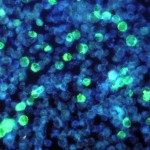Link to Pubmed [PMID] – 17100874
Immunol. Rev. 2006 Dec;214:35-46
Understanding natural killer (NK) cell developmental pathways is crucial for harnessing the potential therapeutic benefits of this specialized lymphocyte subset. The bone marrow (BM) plays a major role in NK cell development, providing the appropriate environmental cues for NK cell commitment and subsequent NK cell differentiation. Nevertheless, the molecular signals provided in this context remain enigmatic. It is widely assumed that BM seeds the periphery with NK cells. However, the precise origins of NK cells found in lymphoid organs and tissues are not defined. Recently, we found that thymic NK cells bear molecular markers and functional attributes that distinguish them from most peripheral NK cells. We find that NK cells are actively exported from the thymus to the periphery, suggesting that thymus-derived NK cells may have unique roles both intrathymically and in secondary lymphoid organs. Here we compare the properties of thymic NK cells with properties of other NK cell subsets that have been identified in the mouse. We propose that heterogeneity in NK cell function can be achieved through distinct thymic and bone marrow pathways of NK cell development.


